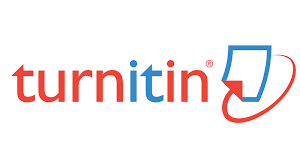Analisis Kemampuan Menyelesaikan Soal Matematika Tipe HOTS berdasar Langkah Polya pada Siswa Kelas VII
DOI:
https://doi.org/10.31100/histogram.v7i1.2639Keywords:
Analisis, Polya, HOTS.Abstract
Penelitian ini terkait penyelesaian soal tipe HOTS berdasarkan Langkah Polya. Tujuan dari penelitian ini yaitu untuk mendeskripsikan kemampuan siswa dalam menyelesaikan soal matematika tipe Higher Order Thinking Skill (HOTS) dalam pokok bahasan Aljabar pada kelas VII menggunkan Langkah Polya. Penelitian ini bersifat deskriptif kualitatitf dimana subjeknya merupakan siswa kelas VII Muhammadiyah 8 Surakarta. Subjek dipilih dengan cara pemberian tes penalaran berupa soal HOTS yang dimana soalnya harus diselesaikan menggunakan Langkah Polya. Diperoleh siswa dengan tingkat penalaran tinggi, penalaran sedang, dan penalaran rendah. Setelah memperoleh siswa dengan tingkat penalaran yang berbeda, siswa melakukan wawancara. Adapun tingkatan penalaran dinilai berdasarkan tahapan pemecahan Langkah Polya, yaitu memahami masalah, menyusun dan melaksanakan rencana, serta memeriksa ulang hasil perhitungan. Berdasarkan analisis data, siswa yang kemampuannya tinggi dapat memahami masalah, menyusun dan melaksanakan rencana secara tepat, juga dapat memeriksa ulang jawaban yang telah diperoleh. Siswa berkemampuan sedang juga mampu memahami masalah, menyusun dan melaksanakan rencana dengan tepat, tetapi siswa tidak melakukan tahap memeriksa ulang. Siswa berkemampuan rendah tidak mampu dalam menyusun rencana sebelum melakukan rencana, serta siswa tidak melakukan kegiatan memeriksa ulang hasil jawaban siswa.
References
Alfansyur, A., & Mariyani. (2020). Seni Mengelola Data : Penerapan Triangulasi Teknik , Sumber Dan Waktu Pada Penelitian Pendidikan Sosial. HISTORIS : Jurnal Kajian, Penelitian & Pengembangan Pendidikan Sejarah, 5(2), 146–150.
Asrijanty, & Hadiana, D. (2019). Panduan Penulisan Soal HOTS-Higher Order Thinking Skills. Pusat Penilaian Pendidikan Jakarta, Desember 2019.
Irwanto, Saputro, A. D., Rohaeti, E., & Prodjosantoso, A. K. (2018). Promoting critical thinking and Problem Solving Skills of Preservice Elementary Teachers through Process-Oriented Guided-Inquiry Learning (POGIL). International Journal of Instruction, 11(4), 777–794. https://doi.org/10.12973/iji.2018.11449a
Nasyiwa, A., Hikmah, N., Wahidaturrahmi, & Sripatmi. (2022). Kemampuan Siswa Dalam Menyelesaikan Soal Matematika High Order Thinking Skills Berdasarkan Langkah Polya Pada Materi Pola Bilangan. Griya Journal of Mathematics Education and Application, 2(2), 449–460. https://doi.org/10.29303/griya.v2i2.169
Polya, G. (1945). How to Solve It Mathematical Method.
Salahuddin, M., & Ramdani, N. (2021). Kemampuan Berpikir Kritis Siswa Dalam Memecahkan Masalah Matematika Berdasarkan Tahapan Polya. Tarbiyah Wa Ta’lim: Jurnal Penelitian Pendidikan Dan Pembelajaran, 8(1), 37–48. https://doi.org/10.21093/ twt.v8i1.3127
Siagian, M. V., Saragih, S., & Sinaga, B. (2019). Development of Learning Materials Oriented on Problem-Based Learning Model to Improve Students’ Mathematical Problem Solving Ability and Metacognition Ability. International Electronic Journal of Mathematics Education, 14(2), 331–340. https://doi.org/10.29333/iejme/5717
Susilowati, Y., & Sumaji, S. (2021). Interseksi Berpikir Kritis Dengan High Order Thinking Skill (Hots) Berdasarkan Taksonomi Bloom. JURNAL SILOGISME : Kajian Ilmu Matematika Dan Pembelajarannya, 5(2), 62–71. https://doi.org/10.24269/silogisme.v5i2.2850
Sutama, S., Janah, N. N., & Novitasari, M. (2018). Faktor Stratejik Hasil Belajar Matematika Siswa di Sekolah Menegah Pertama. Jurnal VARIDIKA, 29(2), 176–184. https://doi.org/10.23917/varidika.v29i2.5633
Wantoro, J., Sutama, S., Zuhriah, S., & Hafida, S. H. N. (2019). Pengembangan Instrumen Penilaian Pendidikan Profesi Guru Sekolah Dasar Bebasis Hots. Profesi Pendidikan Dasar, 6(1), 11–20. https://doi.org/10.23917/ppd.v1i1.8453
Yunita, D. A., Sugono, D., & Suendarti, M. (2021). Kesalahan Penggunaan Tanda Baca dan Kosakata dalam Penulisan Karangan Deskripsi. Diskursus: Jurnal Pendidikan Bahasa Indonesia, 3(02), 121–129. https://doi.org/10.30998/diskursus.v3i02.7494
Downloads
Published
Issue
Section
Citation Check
License
Please find the rights and licenses in Histogram: Jurnal Pendidikan Matematika. By submitting the article/manuscript, the author(s) accept this policy.
1. License
The non-commercial use of the article will be governed by the Creative Commons Attribution license as currently displayed on Creative Commons Attribution-ShareAlike 4.0 International.
2. Author's Warranties
The author warrants that the article is original, written by a stated author(s), has not been published before, contains no unlawful statements, does not infringe the rights of others, is subject to copyright that is vested exclusively in the author and free of any third party rights, and that any necessary written permissions to quote from other sources have been obtained by the author(s).
3. User Rights
Histogram: Jurnal Pendidikan Matematika's spirit is to disseminate articles published for free. Under the Creative Commons license, Histogram: Jurnal Pendidikan Matematika permits users to copy, distribute, display, and perform the work for non-commercial purposes only. Users will also need to attribute authors and Histogram: Jurnal Pendidikan Matematika when distributing works in the journal.
4. Rights of Authors
Authors retain all their rights to the published works, such as (but not limited to) the following rights;
- Copyright and other proprietary rights relating to the article, such as patent rights,
- The right to use the substance of the article in one's future works, including lectures and books,
- The right to reproduce the article for one's purposes,
- The right to self-archive the article,
- The right to enter into separate, additional contractual arrangements for the non-exclusive distribution of the article's published version (e.g., post it to an institutional repository or publish it in a book), with an acknowledgment of its initial publication in this journal (Histogram: Jurnal Pendidikan Matematika).
5. Co-Authorship
If other authors jointly prepared the article, any author submitting the manuscript warrants that all co-authors have authorized them to agree on this copyright and license notice (agreement) on their behalf and agree to inform their co-authors of the terms of this policy. Histogram: Jurnal Pendidikan Matematika will not be held liable for anything arising from the author(s) internal dispute. Histogram: Jurnal Pendidikan Matematika will only communicate with the corresponding author.
6. Royalties
This agreement entitles the author to no royalties or other fees. To such an extent that it is legally permissible, the author waives their right to collect royalties relative to the article regarding any use by Histogram: Jurnal Pendidikan Matematika.
7. Miscellaneous
Histogram: Jurnal Pendidikan Matematika will publish the article (or have it published) in the journal if the editorial process is completed. Histogram: Jurnal Pendidikan Matematika h editors may modify the article to a style of punctuation, spelling, capitalization, referencing, and usage that deems appropriate. The author acknowledges that the article may be published to be publicly accessible, and such access will be free of charge for the readers, as mentioned in point 3.




